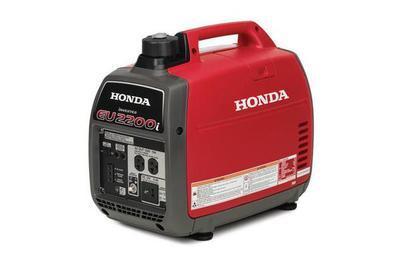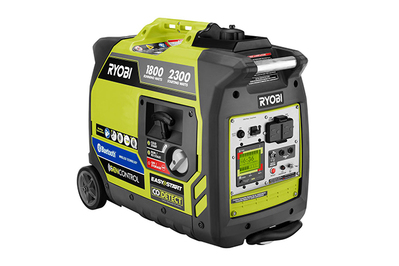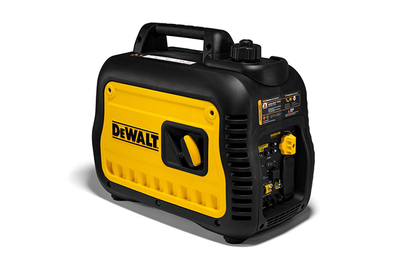We spent weeks researching generators over the 2020–21 fall and winter and tested four we considered ideal for grab-and-go power. These generators are not big enough to power an entire house, but with some smart power management, you can use one to keep the essentials going during an emergency. Because these generators are so small, they’re great for camping, tailgating, and working on outdoor projects, too.
Top pick
After we tested four generators in the 2,200-watt range, it was clear to us that the Honda EU2200i was the best. The Honda was the quietest, lightest, and most powerful generator we looked at—it even exceeded its listed capabilities and powered appliances and tools that caused the other generators to overload. Its distinguishing feature is its high-quality Honda engine, which is significantly larger than other generators we tested. Starting a gas engine can be frustrating, and that alone could keep someone from buying a generator, but the EU2200i was the only model we tested that started on the first pull of the cord every single time we used it. In addition, you can easily monitor the Honda’s power output through a Bluetooth-connected app, so during a storm you can manage (and maximize) the generator’s operation from the cozy confines of your home. This is a relatively new feature that not many generators have. Like all of our picks, the EU2200i also has an onboard carbon monoxide detector that shuts the generator down if a concentration of the deadly gas gets too high, which can happen if the generator is running in an enclosed area. (And that’s why you should never run one of these indoors or even in your garage with the doors open.)
Honda generators have an excellent reputation and recognition in the industry as the gold standard, but the hitch is that this quality comes at a cost. The EU2200i is typically priced over $1,000, about $400 more than other gas options. But if we were riding out a storm-related outage or powering a coffee maker on a camping trip, this is the machine we’d rely on.
Runner-up
If the Honda EU2200i is priced too high or you place a premium on user-friendly features, we also like the Ryobi RYi2322VNM Bluetooth inverter generator. Its engine is smaller than that of the Honda, so it’s not as robust, but in our tests it performed as well as any of the other non-Honda generators. What sets it apart from the other models we tested, including the EU2200i, is how easy to understand its Bluetooth app is. The Ryobi app not only tracks power usage, as the Honda app does, but also shows the fuel level at any given moment and an estimate of how much time remains while the generator is running at the current load. The app also lets you switch into and out of eco mode (which helps with fuel efficiency), and it can restart the generator if the machine overloads. Topping things off, the RYi2322VNM has wheels and a telescoping handle (as on a piece of luggage) that make moving it around a yard easy.
Also great
With extreme weather getting more and more unpredictable and hurricane seasons lasting longer, we’ve noticed that portable inverter generators are often in short supply. If our top two picks are not available, we also like the DeWalt DXGNI2200 2,200-watt inverter generator. Like the others, it has a carbon monoxide detection feature, which we deem essential. As for performance, the DeWalt was similar to the Ryobi in our tests; however, because it lacks an app, managing the available power is harder. DeWalt has described this model as being “ultra quiet,” and although it’s true that all of the models we tested are relatively muffled, in our tests the Honda EU2200i still made the least amount of noise.
Also great
The Ego Power+ Nexus Portable Power Station PST3042 offers power similar to that of the Honda EU2200i with none of the drawbacks of a gas engine. It needs hardly any maintenance, barely makes any noise, and produces no exhaust, so you can use it indoors. That makes it perfect for doing projects around the house or garage, or for hosting backyard entertainment. It particularly excels in intermittent work—we got a day’s worth of cuts with a circular saw on a single charge—but its limitations show in high-draw, continuous-use applications such as powering a space heater, which causes the batteries to drain too quickly. Fully recharging the batteries can take eight or so hours. In spite of those flaws, the Ego is still an excellent power source, with an intuitive app that helps you stretch out your power supply. During our real-world testing, we always reached for this model above the others due to the simplicity of the battery power as opposed to gas. It’s handy if you live in an area prone to short-term power outages, but you’ll need to keep a close eye on the battery levels. If you’ve already invested in Ego’s batteries through purchasing the company’s lawn gear, the Power+ Nexus is even more appealing, as the batteries are all compatible.







